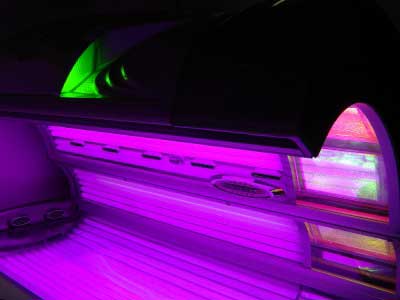The Food and Drug Administration in the United States is currently debating a proposed order regarding the labeling and reclassification of indoor tanning beds. If the proposal is approved, a label warning minors not to use the device will be required.
The proposed order does not prohibit minors under the age of 18 from using indoor tanning beds, but it does serve as a cautionary note. The FDA also wants the warning to be included in any promotional materials used by tanning salons.
This government action is intended to prevent future cases of melanoma, the deadliest form of skin cancer. According to the American Academy of Dermatology (AAD), over 28 million people, primarily between the ages of 16 and 29, tan indoors on a regular basis.
According to recent AAD research, people exposed to ultraviolet radiation from indoor tanning are 75 percent more likely to develop melanoma, and the risk increases with each use. Melanoma is the second most common type of cancer in adolescents.
“Using indoor tanning beds can damage your skin and increase your risk of developing skin cancer,” said FDA Commissioner Margaret A. Hamburg, M.D. “The FDA’s proposed changes will help address some of the risks associated with sunlamps products and provide consumers with clear and consistent information.”
Sunlamp products will now be classified as moderate-risk devices (class II) rather than a low-risk device under this proposed order (class I). This new rule will allow the FDA to inspect the safety and design of all tanning beds before they are sold.
“There are risks and benefits, just like there are with regular sunlight,” says John Overstreet, associate director of the Indoor Tanning Association, in the article. “We’ve collaborated with the Food and Drug Administration since they began regulating the industry.”
The Indoor Tanning Association is willing to support any changes that would improve the safety and satisfaction of its customers. However, they are concerned that all of these changes will add to the already difficult economic climate.
On May 6, 2013, the proposed order was made public. The FDA gave it a 90-day window to respond to all comments before making a final decision. Even though no specific time frame was provided, it was designated as a priority.
According to the International Agency for Research on Cancer, those who use tanning beds before age 35 are 75% more likely to develop melanoma. Individuals with this cancer frequently pay higher premiums for health and life insurance.


